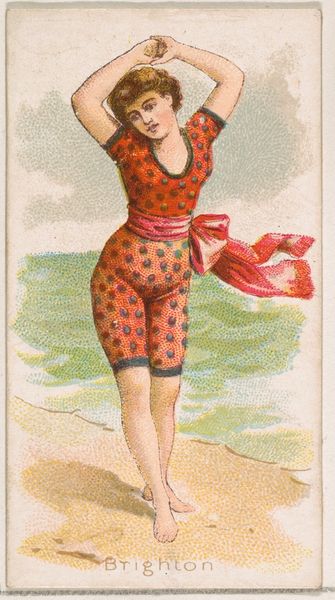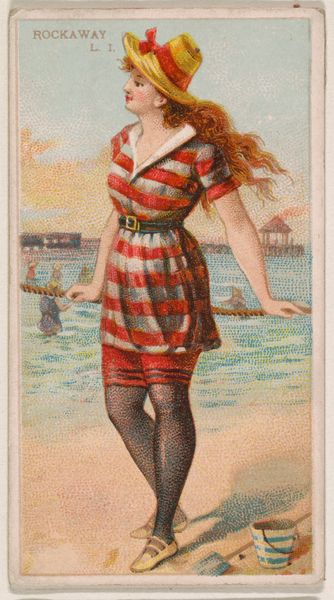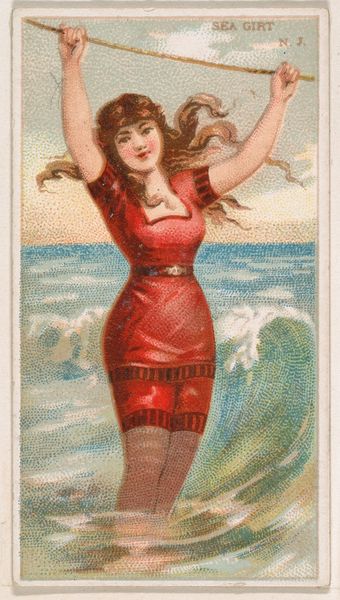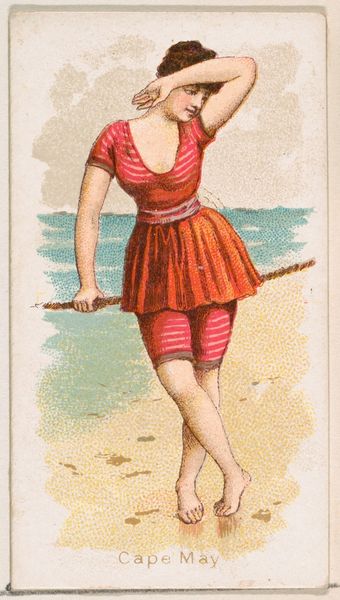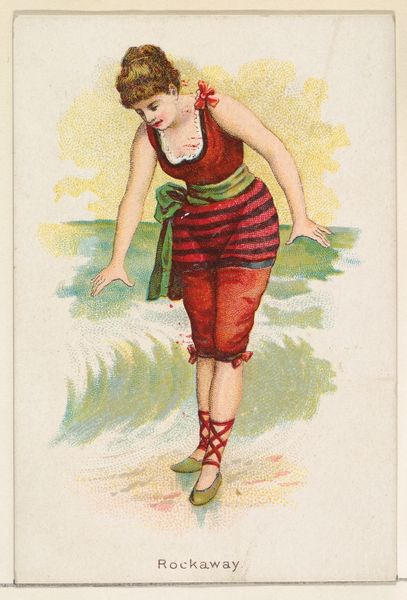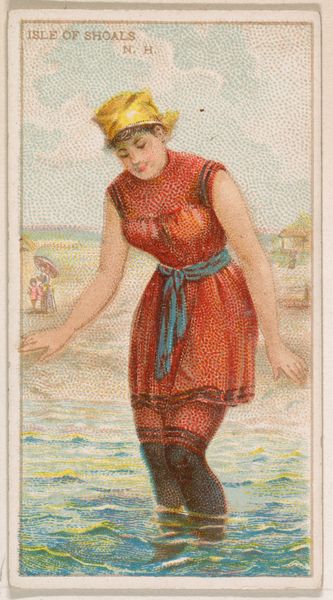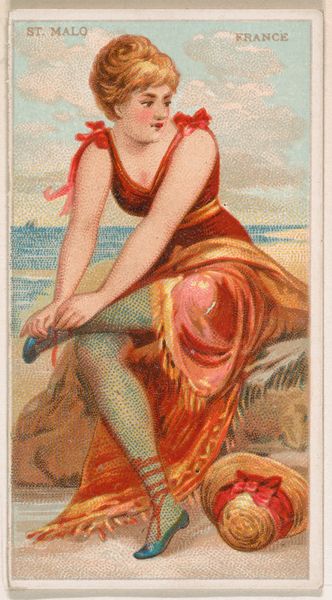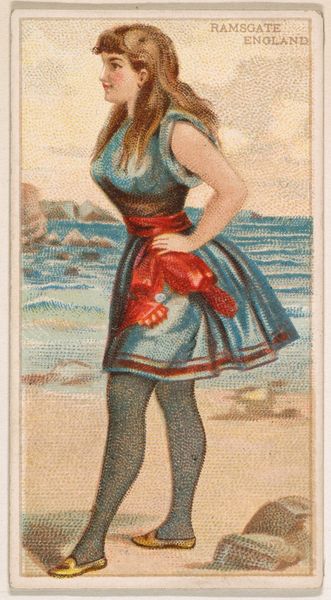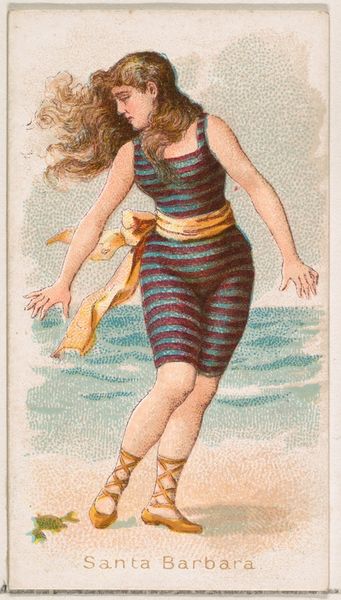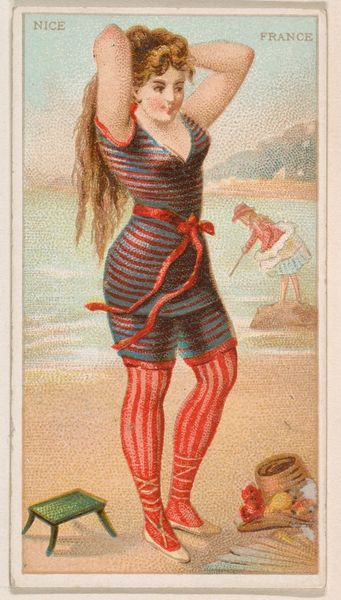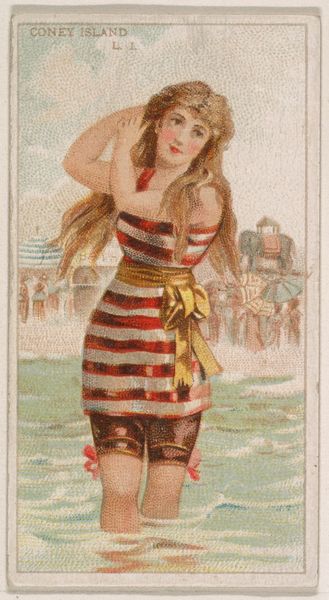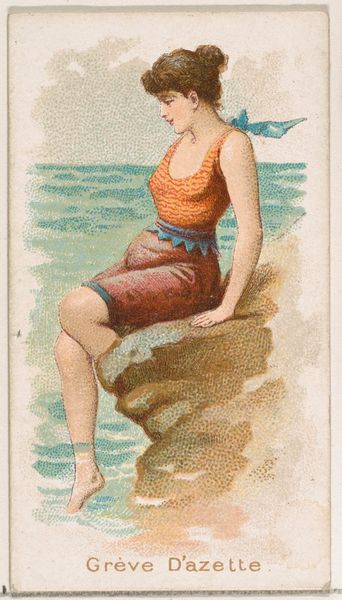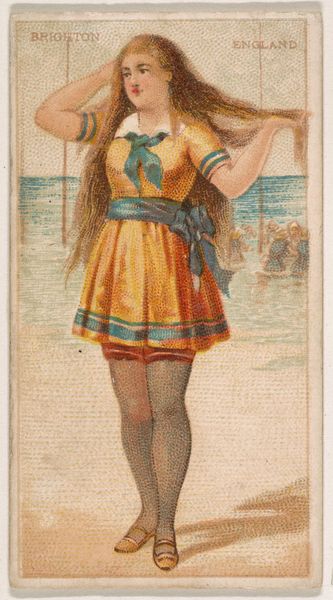
Deal Beach, New Jersey, from the Surf Beauties series (N232), issued by Kinney Bros. 1889
0:00
0:00
drawing, print, photography
#
drawing
# print
#
impressionism
#
landscape
#
figuration
#
street-photography
#
photography
#
watercolour illustration
#
genre-painting
#
watercolor
#
realism
Dimensions: Sheet: 2 3/4 × 1 1/2 in. (7 × 3.8 cm)
Copyright: Public Domain
Curator: This is "Deal Beach, New Jersey, from the Surf Beauties series (N232)", dating to 1889 and attributed to Kinney Bros. Tobacco Company. The piece resides here at The Met. Editor: My initial impression is one of constrained liberation. The subject, rendered in bright watercolors, is captured mid-stride, evoking movement, but the composition and medium feel decidedly posed and contained. Curator: The piece is a trading card, meant to be collected. In that light, it's interesting to think about how mass-produced imagery like this contributed to shaping ideals of femininity and leisure in the late 19th century. The subject isn't simply "at the beach"; she is an idealized type being presented and consumed. Editor: Agreed. And technically, the execution is quite interesting. The stippling creates texture, an almost pointillist effect in a photomechanical print. The high key palette and chromatic relationships add a dynamic feel which enhances the perception of depth, so it’s less a photograph than a representation of one. Curator: Considering its context, the seemingly innocent subject raises some uncomfortable questions about consumerism and representation, particularly if one thinks about race and class dynamics, or even what public “beauty” means. Editor: But there’s a definite pleasure in how light filters across her form. There’s a considered sense of placement here. Curator: Sure, the artist has carefully orchestrated how light interacts with form and fabric. But where does pleasure end, and exploitation begin, in an image like this designed for commerce? How might its message be altered through circulation and reception among different audiences? Editor: Perhaps it’s about accepting the paradoxes inherent in visual representation itself. To isolate an element for visual attention isn't necessarily reductive. There is also some compositional beauty, such as her right arm leading up towards her hair, which offers visual dynamism that complicates such direct associations. Curator: Precisely, it's not about a simple good versus bad binary, but a messy web of motivations and effects. The subject embodies this ambiguity by being both powerful and restrained, alluring and manufactured, perhaps without even knowing. Editor: Absolutely. Thanks for lending that critical framing. Curator: My pleasure. It's these dialogues across diverse theoretical vantage points that continually enrich how we engage with such artefacts from the past.
Comments
No comments
Be the first to comment and join the conversation on the ultimate creative platform.
